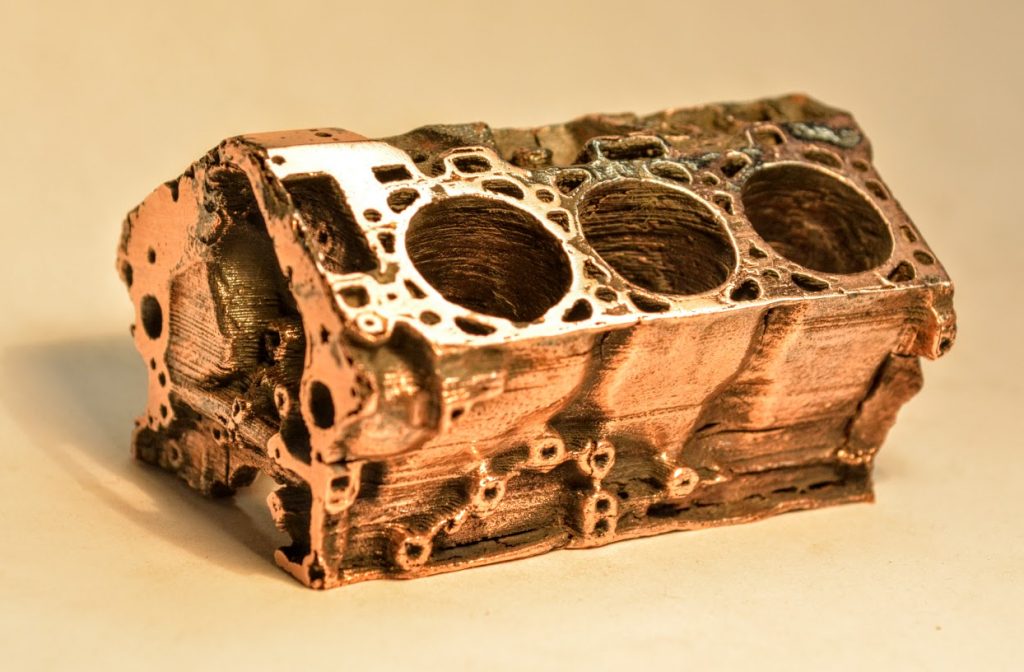Since launching on Kickstarter in 2015, The Virtual Foundry’s Filamet™ copper and bronze 90% metal filament has been used to make stunning models that look as though they could have been cast rather than 3D printed. We decided to use some of the material and put it to the test.
Based in Wisconsin, the filament manufacturer has customers including the U.S. Department of Energy, Lockheed Martin, the U.S. Navy and Minolta. The company have come a long way from the basement workshop they were working in around 2 and half years ago.

How does it work?
Filamet™ is designed to be compatible with any desktop FFF/FDM 3D printer using an all-metal hot end. It is extruded in the same manner as plastic PLA, but at a slower-pace to allow for adequate melting of the metal content. We ran the filament through one of the printers here at 3DPI to get a better feel for the material and found during the printing stage no additional adjustments were required. The main difference is what you can do once the print run is complete.

3D Printing with Filamet™ results in satisfyingly weighty object with a matte finish. Polishing then adds shine to the printed object and gives it the appearance of a typical metal. This might be the stage you decide to stop at for many desktop projects: and the result will still be impressive. It’s what you can do next that makes the material more interesting than the average filament.
The 3D print can be put into an kiln and fired by using Virtual Foundry’s Magic Black Powder (they wouldn’t reveal the magic in the secret sauce unfortunately). Firing in the kiln at temperatures of up to 989.2 degrees Celsius removes the binding material from the filament leaving a heavier part of almost 100% metal.

Virtual Foundry’s Filamet™ material is a welcome challenge to the more established methods of metal additive manufacturing. It’s a novel approach and much cheaper alternative for sure. Moving forward, we’re told that the team plan to add to their range of metals, with stainless steel expected to be the next advance. In the meantime, for anyone wanting to try out Filamet™ Copper PLA, it is now available to buy from online re-sellers. A kit including Magic Black Powder for kiln firing and a buffing kit is available here.
More information about the company is also available here.
Featured image shows a test print conducted by 3DPI using Filamet.



